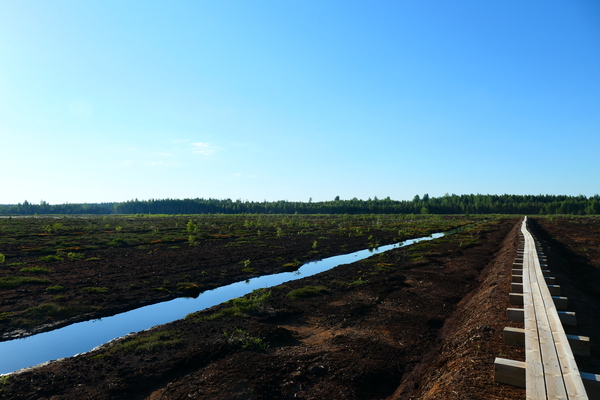Ecohydrology and biogeochemistry of peatlands – implications for restoration efforts and greenhouse gas mitigation
Keynote 3 in Hydro- and biogeochemistry
11.10.2024, 09:10-09:35, H 36
Peatlands store about a third of the global soil carbon stocks, despite covering only 3 % of the land surface. The formation of peatlands needs an excess of water in the landscape, as e.g. through high precipitation, low evapotranspiration, or high groundwater table levels. A high water table level and anoxic conditions are crucial factors for preservation of peat and carbon storage, as under anoxic conditions thermodynamic and enzymatic constraints slow the degradation of organic matter. However, under anoxic conditions, the strong greenhouse gas methane (CH4) is formed. In (near) natural peatlands, CH4 emissions are outweighed by C uptake, i.e., carbon storage and net negative radiative forcing. Both factors are yet sensitive to modification of the hydrology. Drained peatlands are therefore currently a large source of greenhouse gases to the atmosphere, particularly in Germany and Europe.
Peatlands are also important players in the hydrological and biogeochemical cycles. While they can act as buffers for hydrological extremes, they release dissolved organic carbon (DOC) to streams. Along with DOC, nutritional or other elements can be released. E.g., peatlands in the Harz mountains in Germany have accumulated heavy metals and metalloids in the past, which are now released to streams along with DOC. Drained peatlands with agricultural land use accumulate nutrients, which may be released upon rewetting, particularly if bound to redox labile phases. Peat profiles further provide records of land use changes, fires, or changes in hydrology, reflected in geochemical indicators or palaeoecological records of vegetation and pollen. Such information is particularly relevant to understand trajectories of past and future peatland development.
For peatland restoration, this implies that detailed investigations of the peatland hydrology and historic development are necessary, along with an assessment of potential redistribution and fluxes of nutrients and elements, and formation of the greenhouse gas CH4.

Peatland restoration site in Estonia. Restoration after peat harvest, applying the moss layer transfer technique.
Keywords: Peatlands, restoration, greenhouse gases, methane, dissolved organic carbon, nutrients, aquatic systems
Export as iCal:


